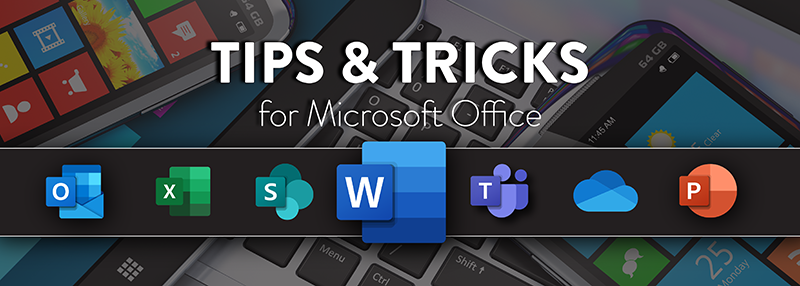The critical part of producing great content requires getting feedback from your colleagues. Years ago, we found ourselves comparing documents next to each other to see what changes were made, and whether to accept those changes. It was time consuming reading word for word in each document trying to spot the differences and not knowing if what was edited made sense.
I do not know what year Microsoft introduced Track Changes to documents in Word, but I can tell you it has been a blessing to those who must proofread all day.
Today, I will walk you through the features of Track Changes, how to use it, and show you Microsoft’s new feature in Word where you can see your individual changes made to a document.
Track Changes is a feature built into Microsoft Word (for PC or MAC) that keeps track of all the edits made to your document and lets you make comments. When Track Changes is turned on, the edit you make to the document is highlighted, appearing in assorted colors or styles to separate them from the original text. This tool is particularly useful for documents with multiple editors, who can review and approve (or reject) each other’s edits.
Let’s get started
First you need to turn on Track Changes. To do this you click on the Review tab on the menu ribbon above, then click Track Changes.
Note: Anyone who grants access to the document to make edits will need to turn on Track Changes on their end for this feature to work properly. Once Track Changes is turned on, everyone who edits the document will see changes whether they are made by the author or collaborators.
The cool new feature added to Track Changes is having the ability to track your own changes. With this new feature, you can now tell Word to track only your changes (“Just Mine”). This will allow you to track your own changes without forcing others to track theirs. 
When you click the down arrow on the Track Changes menu bar, you will have three options:
- Turn Off Track Changes
- Turn on Track Changes For Everyone
- Turn on Track Changes For Just Mine (new feature).

To demonstrate the features of Track Changes, I have turned on this feature For Everyone. As I write this blog, you will see those changes made be formatted in red with an underline. When you share your document with others to review, changes they make will appear in blue. If they decide to delete a sentence or a paragraph of your text, it will be displayed in blue with a strikethrough.
To keep track of edits on a page, the left-hand side margin will display a grey bar that will let you know an edit has been made to this paragraph.

For example, if you delete a couple words or a paragraph with Track Changes on, the text you deleted will remain visible but will appear in red/blue font (my changes are in red, but others who make changes will appear in blue) with a strikethrough. This will help you decipher who made changes to the document as well as keep you from getting confused with the remaining text.


When you hover your mouse over your text a dialog box will appear to let you know what has been added or deleted to the document.
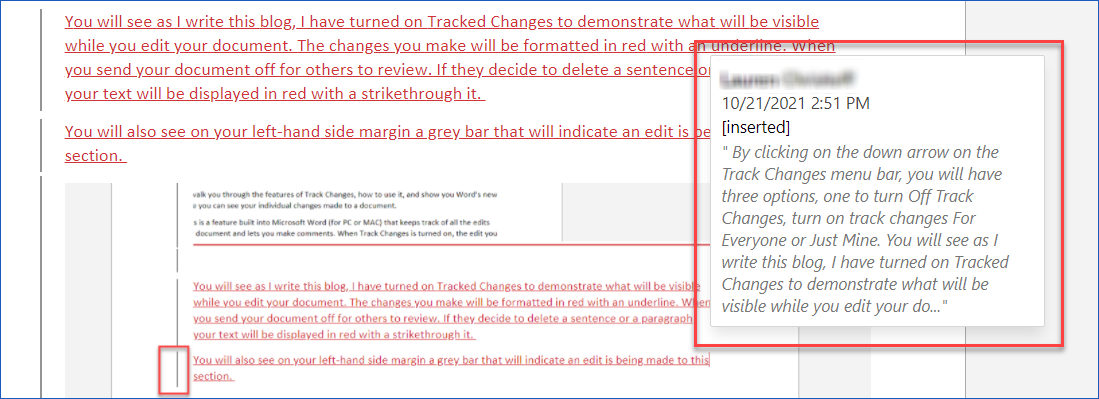
How to accept or reject edits to a document
As a reminder, anyone who reviews and edits your document must turn on Track Changes.
After people have made their changes, you will want to review them and then either accept or reject their changes. Next, I will show you how to accept or reject those changes. On the Menu ribbon at the top right-hand corner, you will see a bunch of buttons:
- Track Changes (turn this on to track your changes)
- Page icon with a green check mark (click this icon to accept a change)
- Page icon with a red X (click this icon to reject a change)
- Page icon with a green arrow pointing to the left (click this icon to go to the previous edit)
- Page icon with a green arrow pointing to the right. (click this icon to go to the next edit)

Note: you can also access these commands when you right click on edited text.
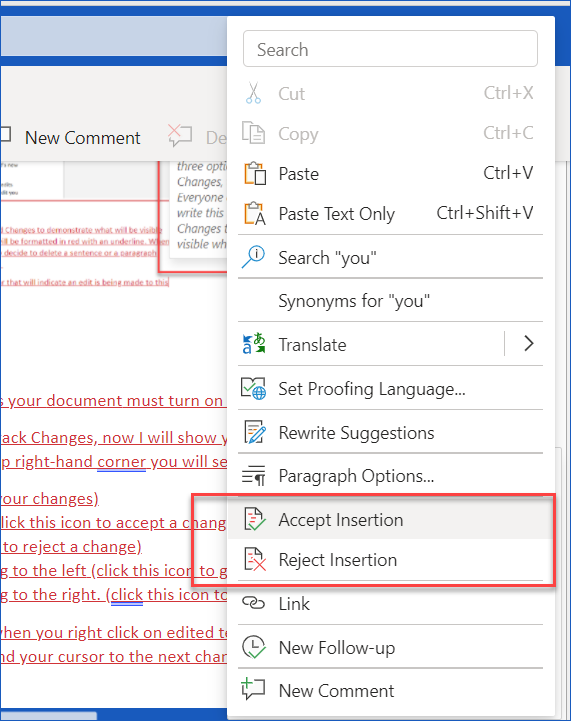
Another way in which you can accept or reject changes is by hovering your mouse over the changed text and either clicking on the check mark to accept or the X to reject.
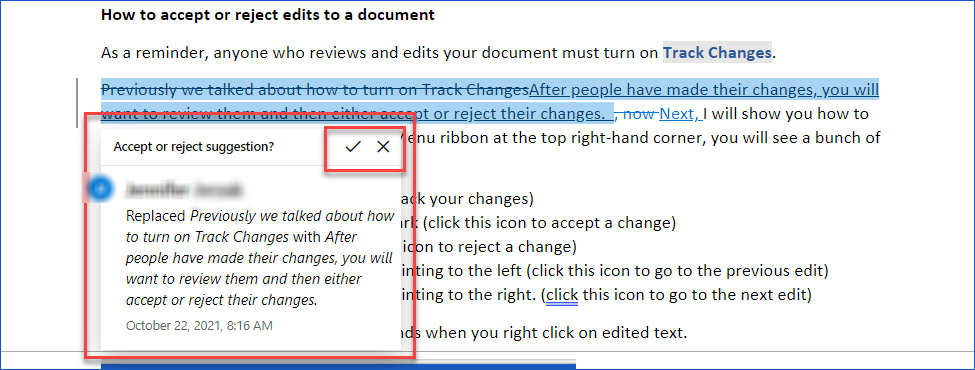
Note: when you accept or reject an edit Microsoft will automatically send your cursor to the next change if any. As a reminder, for you to accept or reject an edit, your cursor must be placed within the area of edits.
Making Comments and Removing Track Changes Comments
If you have a question regarding a statement or need help, you can add comments along the way. In this next section, I will teach you how to make comments in the document without having to add additional text. With your mouse, highlight the text you want to comment on. Then select either New Comment from the menu ribbon or from the popup formatter dialog box.
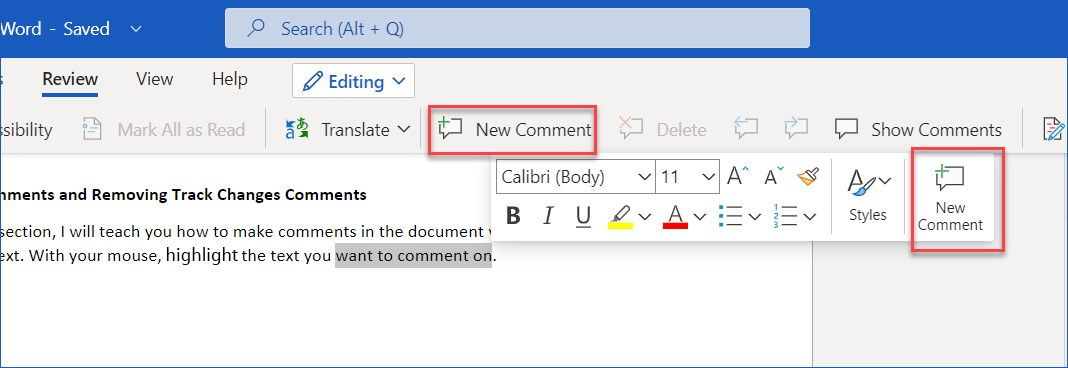
Once you click New Comment, a dialog box will appear to the right of the document with space to mention someone on your team or simply type in a general comment on that highlighted text.
Because my document has not been shared yet with my team, when I mentioned my colleague name, I was prompted to Grant her Access to my document. Next, you will click Share and notify. By doing this, Microsoft will send my colleague an email with a link that indicated this document has been shared with her to review. 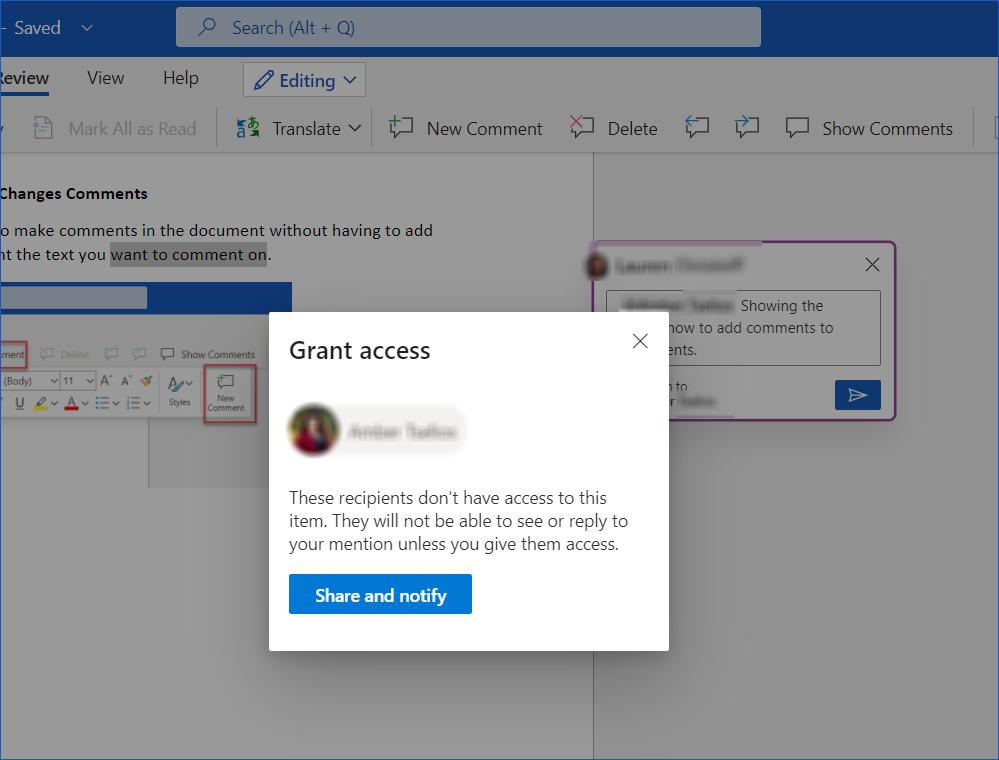
My colleague can then go into the document online and respond to that comment. If she decides to review the document in its entirety, she will need to turn on Track Changes on her end. The screen shot below shows my colleagues response to my comment.
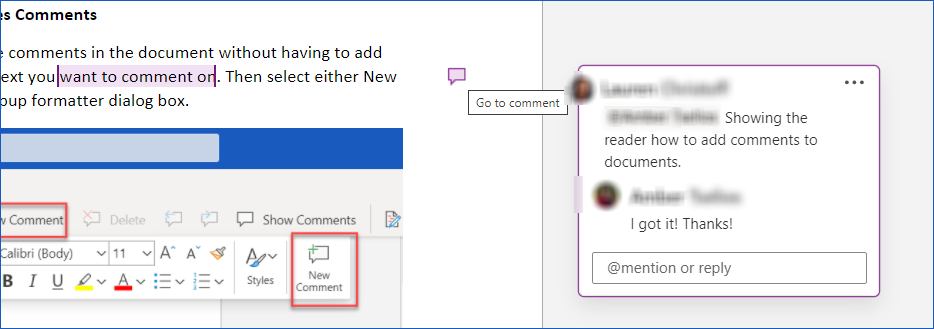
Note: You do not have to mention anyone in a comment, you can simply create a comment for anyone who edits the document to view and add comments if needed.
Click on the ellipsis (…) drop down menu to either edit your comment or to Resolve or Delete thread when that comment as completed. You can also obtain a link to copy and share a comment to others on your team.
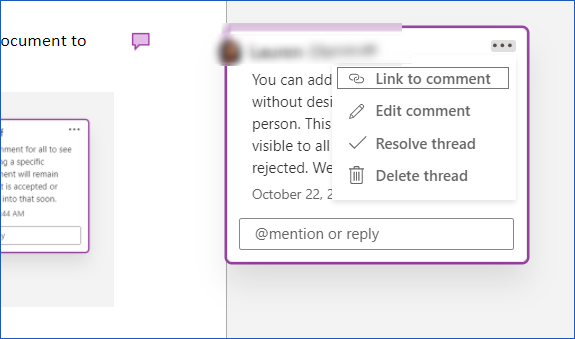
The directions listed above are strictly for Microsoft 365 Word Online. The desktop version of Track Changes is a little more complex with a lot more features to utilize.
A quick synopsis on Track Changes in the Desktop Version of Microsoft Word
The difference between the online version of Word’s Track Changes and the desktop version is that the desktop version allows you to control which changes and comments you see by adjusting the markup options.
In the Review tab, next to Track Changes, there is a drop-down menu with four options that show a variety of levels of changes made to the document.
- All Markup – will show you all the changes and comments that have been made since Track Changes have been turned on.
- Simple Markup – will show a simplified version of changes and commentary, represented by notes in the document’s margins rather than visible formatting.
- No Markup – will hide all change markings and comments but retain the changes.
- Original – will show the document as it is originally appeared before Track Changes was turned on.
You may also customize the type of changes you see by clicking on Show Markup. This will open up a menu with checkmarks next to a variety of options. If an option is checked, it will be included in the markup. To check or uncheck and option simply click on it.
This will allow you to customize which changes are visible to you or other editor’s comments.

Use the Reviewing Pane to view edits made to document
If you need to review all changes that were made to the document in sequence, you can click on the Review Pane button at the top ribbon menu bar and select either Reviewing Pane Vertical (shows up to the left of the screen) or Reviewing Pane Horizontal (shows up at the bottom of the screen).
Whichever your preference, the Reviewing Pane will appear with contents of all changes and comments made to the documents. To turn this feature off, simply click the Reviewing Pane again or click on the X at the top right corner of your Reviewing Pane.
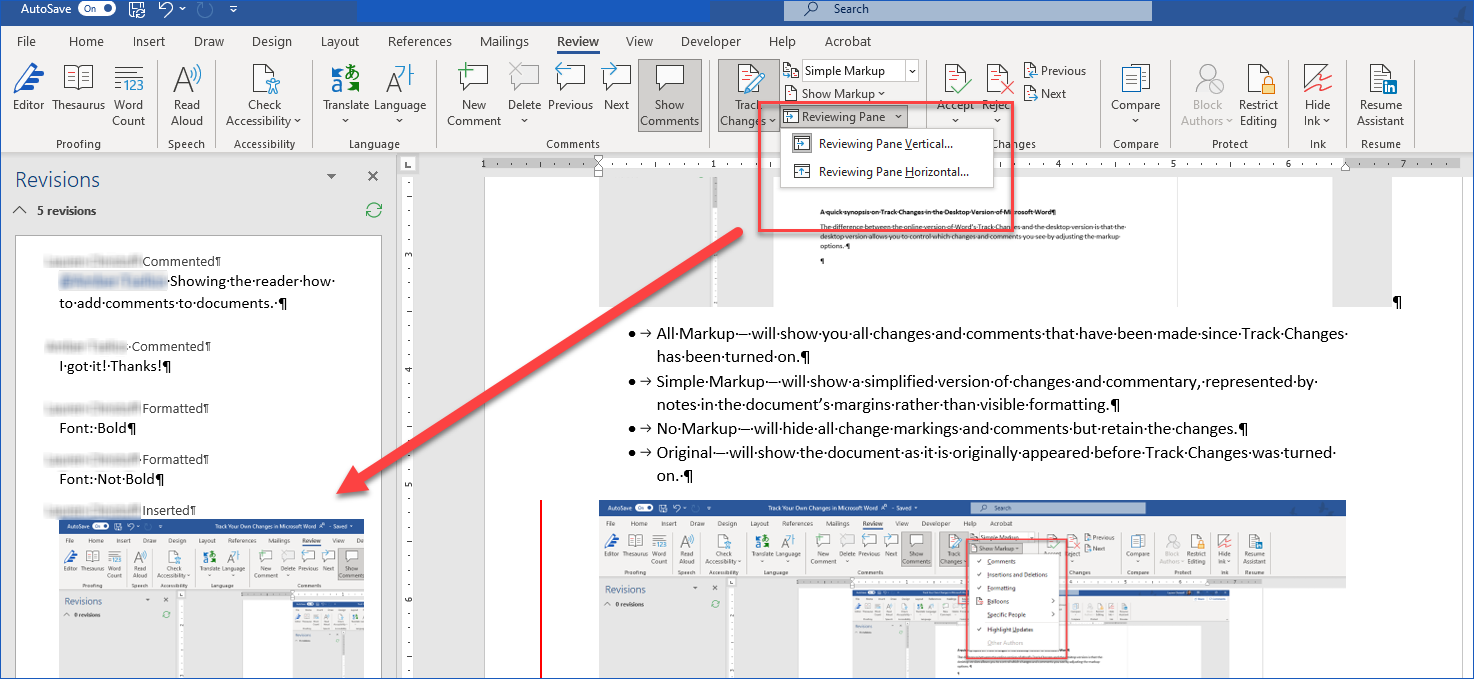
That covers Track Changes in Microsoft Word online and in your desktop version. As always, I hope this helps make editing your documents easier. For more tips and tricks for Microsoft 365 visit and subscribe to our blog.
